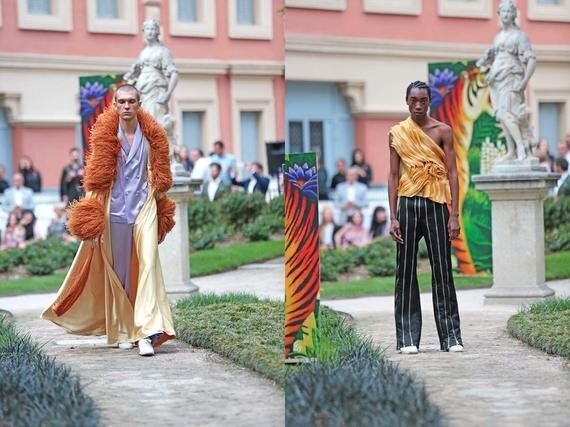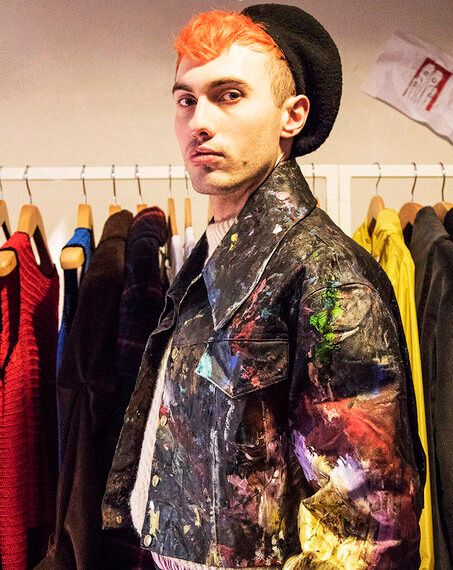
What does it mean to be masculine? Notions of masculinity are instilled upon us before we are even ready to leave the womb: our blue baby-grows are emblazoned with "Daddy's Champion" and football embroidery; our bedrooms are stenciled with cartoon dinosaurs, lions and other alpha-male, tough guy creatures.
And as we leave our nine-month hibernation spot, more extreme rules of masculinity are passed on to us -- wear blue, play football, don't cry and most importantly DO NOT show emotional weakness.

In my case, none of these hints and tips from a hyper-masculine father were very well received and I continued to grow less masculine as time went on. I've always had a problem when somebody says "man up" -- it's degrading for men and even more degrading to women. Thankfully I lucked out with open-minded parents who encouraged me to be myself; but for many men, trying to live up to society's unrealistic and outdated expectations of what it is to be a "man" can be a lifelong acting role.
Men's wardrobes have not always been the basic, machine washable visions we see when we walk down a typical British high-street. There was actually a time when pink silk and ruffled collars didn't make us question a man's "masculinity" (whatever masculinity is) -- the fashion choices represented power. In fact, historically, pink was a colour that was associated more with boys as it was a paler version of red, a colour which was seen as being militaristic. Blue was for girls because it was associated with the Virgin Mary. It wasn't until the 1950s that things began to change, resulting in the heavy blue and pink rulebook we see today.
The 1970s and 80s were a much more experimental and brave time for men's fashion, as evidenced by trends like platform shoes and brazen makeup. Then, something happened in the 90s. Men's wardrobes became hyper-masculine, dull and soulless with a "please don't let me stand out" overtone. Maybe Thatcher is to blame: the "sissy boys" in suits sat around in glass corner offices pushing paper while the "real men" marched for their rights to live and work.
Back then, for some, masculinity was all you had, so you better dress the part. Plus many saw their wardrobe from a purely functional perspective -- they didn't have time to think about how they looked and they didn't really care. I, however, like to blame Mancunian lager drinkers Oasis for this. In the 1990's you were either in Camp Blur & Pulp or Camp Oasis. One was a bit camp and slim-fitting and the other was a bit Neanderthal and eventually one look outlasted the other. Our wardrobes went from skinny Brit pop tees and slim corduroy flares to Burberry shirts and parkas -- and one could argue that the stereotypical, default "man" hasn't looked back.
As we entered the new millennium, words like "metrosexual" started to be passed around, and adverts for hair gel and body hair trimmers became heavily featured in menswear magazines, giving way to a much more "maintained" man.
Thankfully there is light at the end of the tunnel of trends, with a new wave of designers and influencers shaking up our perceptions of gender-appropriate wardrobes. Unless you live in a major city, it can be challenging and intimidating to express your true character through clothing, but thankfully these individuals and brands are helping to pave the way for a very bright and rule-less future. Look at brands like Palomo Spain and British designer Charles Jeffrey (otherwise known as Loverboy) who are challenging societal views of what a man "should" be -- and making beautiful clothing in the process.
Aristotle said that human beings are unique in the world because they are the only creatures who can re-write their nature. So, isn't it about time we re-wrote the nature of man's dress sense? I think so.
